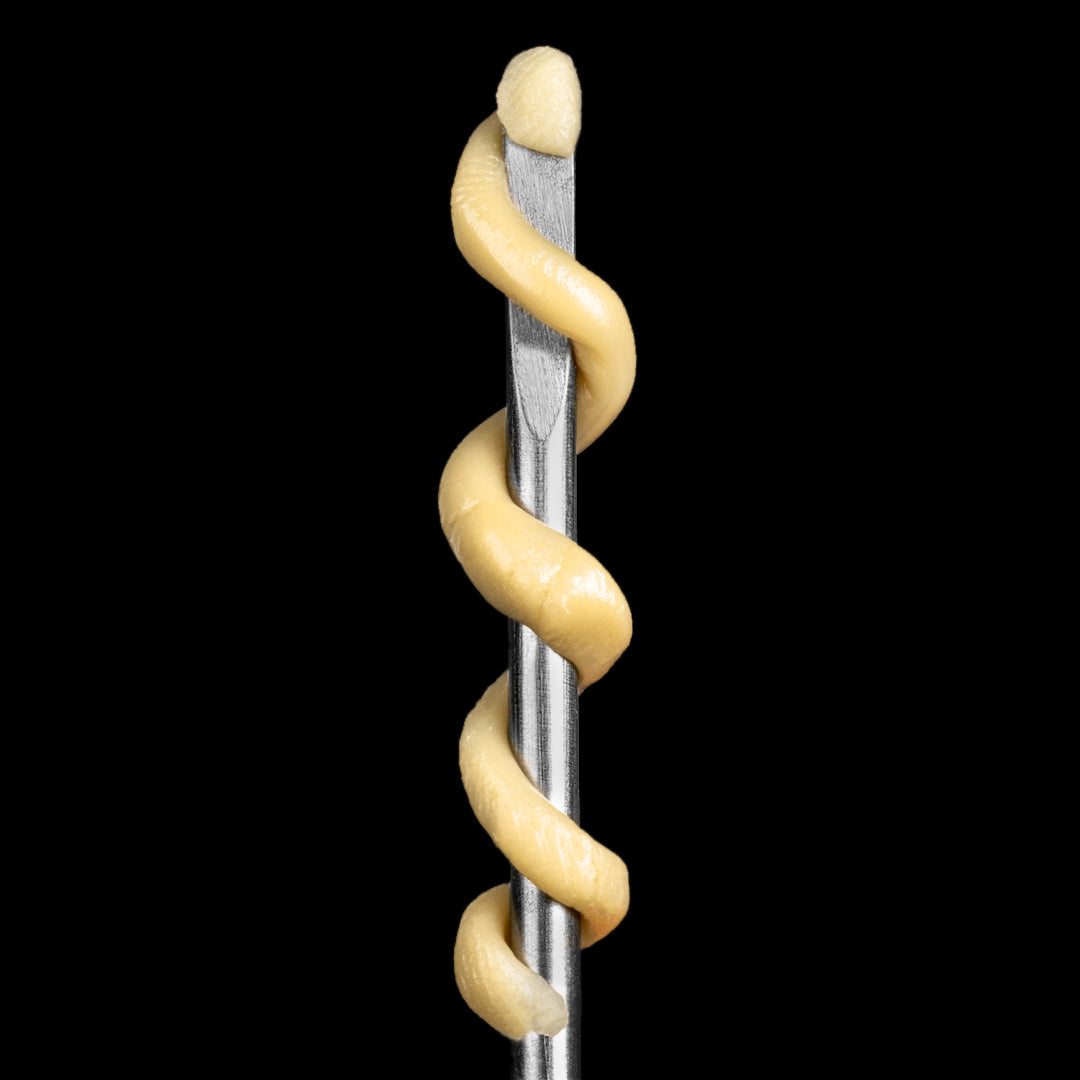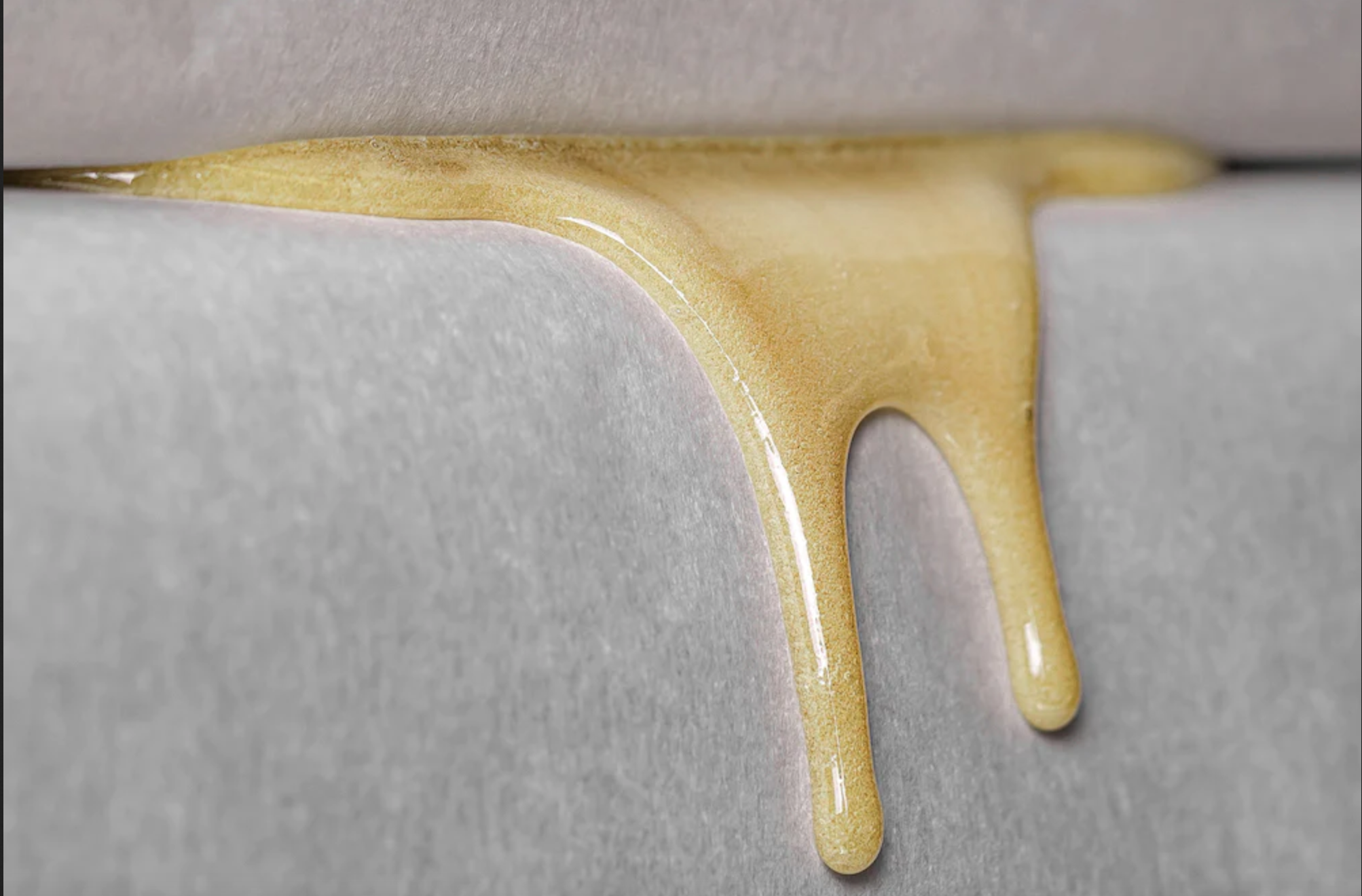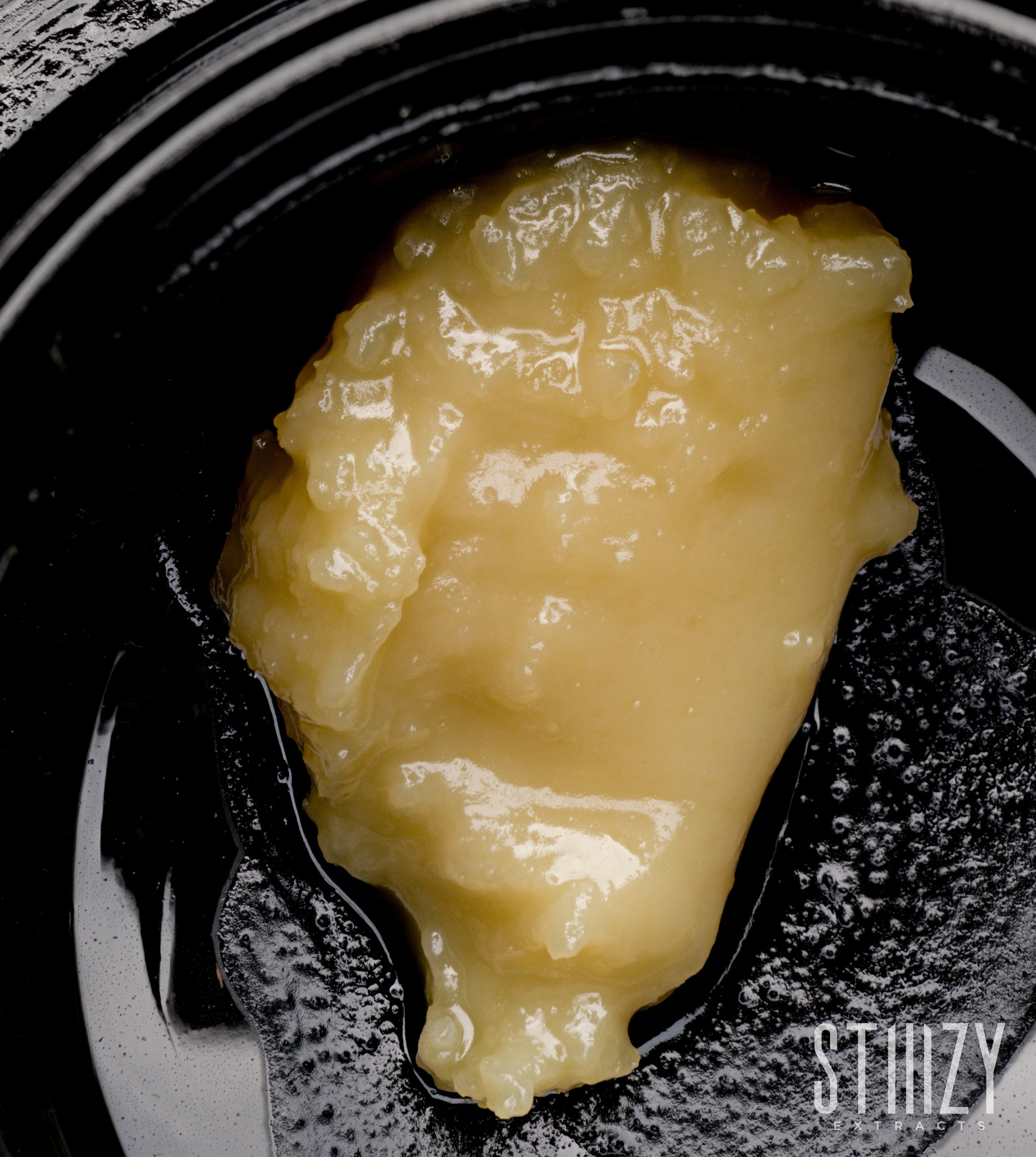IS LIVE ROSIN WORTH THE PRICE?
Live rosin is all the rage amongst concentrate enthusiasts nowadays. That’s because it’s a solventless concentrate that’s super tasty and extremely clean.
A solventless concentrate is as close to the original plant’s profile as possible. Because of their high quality, supreme flavor, and complete experience, live rosin products tend to be the most expensive extracts. But is love rosin worth the price?
Yes, and here’s why.

What to know about rosin vs resin
Cannabis consumers have so many questions about rosin vs resin, how they’re made, and which is better. Let’s take a look and clarify some things.
Rosin vs cured resin
Rosin is made from dried cannabis flowers or kief. It is as solventless as a concentrate can possibly be since it never goes through a chemical solvent extraction process.
Rosin is simply pressed out of cannabis flower or the kief, and bam, it’s ready for consumption. Rosin can be dabbed, vaporized, or added to infused joints and blunts.
Resin is the sticky substance you feel when you touch cannabis flowers. It comes from the trichomes. Cured resin is a concentrate made from that resin, with the use of a chemical solvent in the process.
Rosin is considered to be superior to cured resin, simply due to its solventless nature. Solventless concentrates guarantee a full-spectrum experience, which means you get the most from the original strain’s chemical profile.
Which products are made from cannabis rosin?
You can make so many different products with rosin. They include flower rosin, live rosin, dry sift rosin, and rosin chips.
Flower rosin is the rosin made from pressing up dried and cured flower. It leaves behind a sticky, terpene-heavy concentrate.
Live rosin is rosin that uses fresh frozen cannabis plants as starting material. It is used to create bubble hash, i.e ice water hash.
Freezing the plant locks in those volatile terpenes, then the ice water washes the trichomes from the plant without the use of a solvent. Because it comes from bubble hash, live rosin is also called hash rosin.
Dry sift rosin is rosin made from pressing up the kief, also known as dry sift. Mesh screens are used to sift the trichomes from the cannabis plant before they are pressed into oil.
Rosin chips are leftover pucks of plant material and oil after you run them through a rosin press, which is what you’ll need to create all of these products.
What is a rosin press?
Good rosin is made through the final use of a rosin press. A rosin press is basically a machine with two heating plates that uses controlled heat and pressure to extract trichomes and press them into a tasty, rosin concentrate.
Sure, you can make rosin at home with wax paper and a hair straightener. Just put the bud between the paper and squeeze until the oils melt off the plant.
However, to make high quality rosin, you need a rosin press that enables control over heat and pressure.
Certain cannabis strains require varying degrees of both to maximize oil yield. Too hot of a temperature and you’ll degrade the plant compounds and destroy the rosin’s quality.
That is why it is important to use a rosin press, if you really want some super fire rosin. Temperature and press customization are mandatory.
Making live rosin is one of the best uses of a rosin press. Truly nailing the temperature on creating live rosin will produce one of the best concentrates people can dab and/or vape.

Is live rosin better than live resin?
Live rosin is often preferred to live resin. That’s because it’s solventless, which leaves the original plant’s profile intact. Leaving the profile unaltered makes for a higher concentration of cannabinoids and terpenes in the end.
Live rosin is made through extracting cannabis trichomes from frozen cannabis plants with the use of ice water, then using heat, pressure, and a rosin press to turn those trichomes into a consistency of oil that people can dab.
The original plant’s profile is never touched by a solvent that has to be purged from it, altering the chemical compounds, even if just slightly. Because of that, it is seen as superior to live resin.
Live resin tends to be a saucey mixture with separated THC diamonds in separated terp sauce. Because of that separation, sometimes live resin’s taste profile can be a little bit distorted.
Live rosin straight-up tastes like terps, has bold flavors, and hits with a high potency. That said, there is not yet enough true science to say which of these has the highest amount of terpenes.

Is live rosin more expensive?
Simply put, yes, live rosin is more expensive than live resin because it requires more labor to do properly.
Plus, live rosin tends to come in smaller, more artisanal batches of oil than live resin. With more work going into it, plus a lower supply, live rosin will definitely hit your pockets a little bit more than live resin.
There is no market standard for cannabis products, as dispensaries are free to set whatever markup on products they choose. Some retailers charge $30-$50 for a gram of live resin and $40-$100 for a gram of live rosin.
When it comes to the different textures of live resins and live rosin, there is no true relationship between these and prices.
Currently, on the Weedmaps menu for STIIIZY DTLA, the price of some STIIIZY live rosin jam and some STIIIZY live rosin badder are exactly the same at $45.
Live rosin is absolutely worth the price. When you consume cannabis, whether it be flower, dabs, or vapes, you want it to taste exactly like the strain should.
Being full of flavorful terpenes, having high potency in THC concentration, and being created through a method that preserves your full-spectrum extract, dropping some cash for live rosin products is easily well worth it.
Just make sure you’re buying them from reputable companies that can really bring out a strain’s potential. If you buy some Pink Rosay live rosin badder, it should taste exactly like Pink Rosay’s complete terpene profile.
At STIIIZY, we only use premium flowers for all of our cannabis concentrates, including solventless pods, live rosin badder and jam. Explore all of STIIIZY's products here.
The content provided on this blog is for informational purposes only and is not intended as professional medical advice, diagnosis, or treatment. Please consult with your healthcare provider and local laws before purchasing or consuming cannabis.

